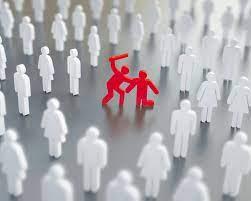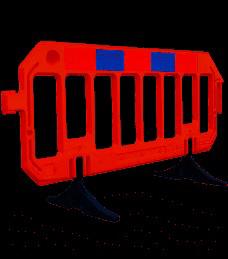What is Bystander Intervention
Bystander Intervention is about noticing a problematic situation and making the decision to get involved.
A bystander is someone who witnesses a situation but isn’t actually involved in it. They’re simply a witness, someone who happens to be there. The very nature of being a bystander means that you don’t have to get involved at all.

You can decide to do nothing and be a passive bystander.
Or you decide that you’re going to get involved and do something – making you an active bystander.
Active bystanders
Active bystanders are a particularly valuable resource in the fight against violence and abuse. By noticing what’s happening around them and speaking out when they see problematic behaviour, active bystanders can send a clear message that violence and abuse will not be tolerated or overlooked.
At Stanford University in 2015, two cyclists famously noticed a male acting suspiciously in an alley and went to investigate. Their actions interrupted Brock Turner’s attempt to rape his victim, and ultimately led to him being caught and prosecuted. These two cyclists could just have carried on with their bike ride that night. They didn’t have to stop – after all, they were just bystanders and the problematic behaviour wasn’t affecting them. But they chose to stop and get involved.

We continue to hear stories in the media of active bystanders who have spotted a potential problem and intervened, from the waitress in Orlando who recognised that a child may be in danger and slipped him a note asking if he needed help, to the woman walking home in London who spotted a situation that just ‘didn’t look right’ and by intervening, she prevented a child from being abducted or the bartender who recognised that a customer was being harassed and chose to do something.
The four stages of intervention
Adapted from Berkowitz, A. (2009) Response Ability: The Complete Guide to Bystander Intervention, Beck & Co., page 10, these are as follows:
- Notice an event
- Recognise there is a problem
- Take responsibility for doing something
- Possess the necessary skills to act
Each stage is vitally important: you have to be aware of what’s happening around you in order to notice when something problematic happens, but of course you also need to be able to identify something problematic. For example, we may be able to spot domestic abuse when it looks like a violent assault, but we also need to know the signs of coercion and control in order to be able to be active bystanders. Likewise, it is important to understand the nature of consent to be able to spot a potentially non-consensual situation and step in. By educating people about the various forms of violence and abuse, it becomes more likely that they will notice when something problematic happens and step in to be an active bystander.
The step from 2 to 3 requires people to make the decision to get involved and take responsibility for doing something, but this requires them to have an idea about what they might do. Step 4 requires active bystanders to have skills to be able to act, from knowing how to diffuse a situation or bring in allies, or having the resources to direct a victim towards support. These four steps are at the heart of bystander intervention training and form the core of the University of Worcester Bystander Course.

Barriers to Bystander Intervention
It’s easy to say that we should get involved in a problematic situation, but the reality is that there can be many barriers to being an active bystander. These can include:
Social Identity (How others see us) – wanting to fit in with everyone else can make people reluctant to intervene and be the one that steps out from the group the group to say “this isn’t okay”.
Fear of Retaliation – the fear that if we say something, the perpetrator may turn on us. This can be especially prevalent if there is a power imbalance between the perpetrator and bystander e.g. if they are your boss and can influence your future promotions. However this doesn’t mean that you can’t be an active bystander – it might just mean that the action you take is altered slightly e.g. instead of a direct confrontation with the perpetrator, you approach the victim to offer support, or bring in allies who are more able to directly intervene.
Diffusion of Responsibility – we assume that someone else will step in to help, especially if there’s a lot of people around. The reality is though, that if we all think this way then often no one actually helps. Its difficult to be the first one to break out of the group and help, but often all it takes is one person to step in and others will join.
Pluralistic Ignorance – We often make assumptions about what other people think about situations, but this can be wrong. For example, if someone in your group tells a misogynistic ‘joke’ and you look round to see everyone else laughing, you may assume that you are the only one hat feels uncomfortable, so in order to fit in then you laugh too. BUT – what if the others in the group feel the same way? What if they too are uncomfortable but look around and see everyone laughing so they assume that they are the only one with concerns. By speaking out when we feel uncomfortable then we create a space for others to speak up too.